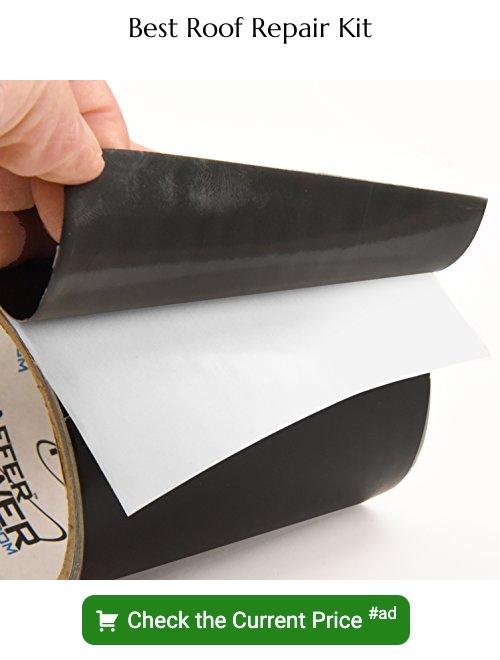Last updated on
Discover if you can pocket your insurance claim money instead of using it for roof repairs.
Key takeaways:
- Understanding roof insurance claims and the role of your policy in handling damages.
- Differences between replacement cost coverage and actual cash value coverage.
- The claim filing process and the importance of accurate documentation.
- Handling the insurance claim money and prioritizing necessary repairs.
- Consequences of not using insurance money for intended repairs, including potential safety hazards and difficulties when selling your home.
Understanding Roof Insurance Claims

When your roof takes a hit, whether from a hailstorm or a tree limb’s impromptu visit, insurance often steps in to save the day. The vital document in this scenario is your policy, which spells out how covered damages are handled. Typically, insurers evaluate the situation: they’ll size up the damage, consider the age of your roof, and peek at the cause of the mishap. Now, don’t let legalese trip you up; the process is straightforward once you’ve got the hang of it. Policies usually come in two flavors—replacement cost coverage pays for a brand-new roof minus your deductible, while actual cash value coverage factors in depreciation. Imagine your roof’s like a car; over time it’s worth less, and actual cash value coverage takes this into account. Always read the fine print, as insurance companies might have different interpretations of what constitutes a covered peril. Remember, regular maintenance is your roof’s best friend against wear and tear arguments from your insurer. Keep those records handy to show your roof was in tiptop shape before any incident. And here’s a golden nugget: if your roof is just hitting its twilight years and not exactly in distress, normal deterioration or age-related issues usually aren’t covered. An insured roof is like a safety net for your home; knowing the ABCs of your policy keeps you prepared for whatever the sky throws your way.
Differences Between Replacement Cost Coverage and Actual Cash Value Coverage
Understanding your insurance policy before a storm hits is like knowing where the lifeboats are on a ship; it’s critical for navigating choppy waters. Roof insurance coverage comes in two main flavors: replacement cost coverage and actual cash value coverage.
Think of replacement cost coverage as your path to restoring the old glory of your roof. This type of coverage shoulders the full cost of repairing or replacing your damaged roof with a similar kind and quality, minus the deductible. It doesn’t account for depreciation, so it’s like getting a brand-new hat for your home without considering the age of the one the wind blew away.
On the flip side, actual cash value coverage factors in wear and tear. It assesses your roof’s worth the day before Mother Nature threw a tantrum. The reimbursement amount considers the roof’s depreciated value, meaning you’ll likely need to dig into your piggy bank to cover the gap between the actual cash value and the cost to replace or repair your roof.
These two coverage types impact the compensation you get from an insurance claim post-disaster. It’s worth noting, without a solid understanding, you might find yourself in a rainstorm without an umbrella.
The Claim Filing Process: A Brief Overview
Filing a claim kicks off when you spot damage. Take photos – they’re worth a thousand words to your insurer. Contact your insurance company pronto. Time is of the essence, and delays can be costly.
They’ll send an adjuster to assess the damage. Their job? To determine the repair cost based on your policy.
Paperwork can seem like a chore, but dotting the I’s and crossing the T’s is critical. Complete all forms accurately to avoid hitches.
Keep receipts if you need temporary fixes before the adjuster visits. These might be covered. Transparent communication with your insurer can prevent misunderstandings and speed up the process.
Remember, this is a collaborative journey with your insurer, not a solo trek. Questions are your friend. Ask away to clarify doubts and sidestep potential roadblocks.
Lastly, patience is a virtue in the claim process. Mind the details, hold tight to the guidelines, and anticipate a smoother ride to resolution.
Handling the Insurance Claim Money for Roof Repairs
Once you receive the insurance claim payout, the ball is in your court; consider your options carefully. If your policy allows it, you could potentially pocket the excess funds, provided the repairs are completed to a standard that satisfies the mortgage company—if there is one involved.
Prioritize making the necessary repairs with a qualified professional. Skimping on quality or delaying could lead to more significant expenses down the road, and nobody wants a leaky roof when the next storm hits.
Always document every step of the repair process. Keep receipts, contracts, and correspondence. This documentation can be your best friend if your insurance provider circles back for a post-repair inspection.
Remember that the insurance company has a vested interest in your roof’s condition. If future claims arise and prior funds were not used correctly, you could find yourself in hot water—or worse, uncovered in a rainstorm.
Think long-term. While it might be tempting to use leftover funds for a non-related expense, one-upping your home’s first line of defense against the elements is often the wisest investment you can make. Your future self, cozy and dry during a downpour, will thank you.
Consequences of Not Using Insurance Money for Intended Repairs
Let’s get down to brass tacks. Suppose you bank the insurance payout instead of fixing your roof. Well, imagine having a piggy bank for a rainy day, but the roof above it leaks like a sieve. The next storm could invite water damage like an unwelcome guest, leaving you with a houseful of woes. Worse yet, your insurance might give you the cold shoulder for future water damage claims because you didn’t patch up the roof when you had the chance.
But wait, there’s more. If your roof throws in the towel and collapses because those repairs were put off, you’re looking at safety hazards. We’re talking about your family’s well-being hanging in the balance. Plus, it can ding your home’s value faster than a scratched lottery ticket.
And let’s not forget the fine print. Your policy probably has a clause that’s as stern as a librarian with a “quiet, please” sign. If you agreed to use the funds for repairs and instead treated yourself to a tropical getaway, you might have contract troubles darker than storm clouds.
Lastly, selling your home could become an obstacle course. Potential buyers have an eagle eye for such things, and selling a home with an untreated, damaged roof is like trying to sell a car with a flat tire – you just won’t get far. So, make a wise choice: a stitch in time saves nine, and a repaired roof saves a dime (and quite a headache).





